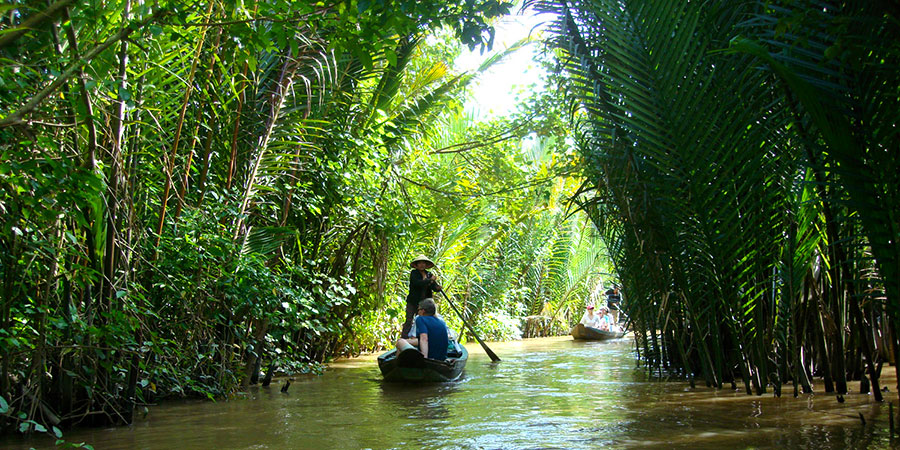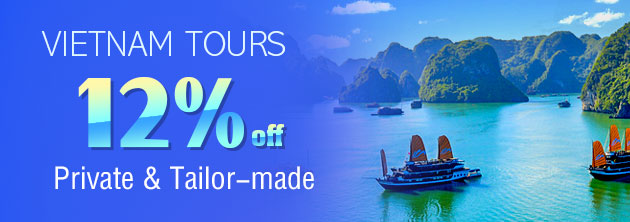Mekong River – A Comprehensive Introduction
Mekong River, the trans-boundary river of Southeastern Asia, is an important part of the Vietnamese culture. The Mekong emerges from the Tibetan Plateau and runs through China, Myanmar, Laos, Thailand, Cambodia, and ends its journey in Vietnam. Mekong River has formed a set of distributaries and channels in the southwest of Vietnam, which constitutes the ‘rice bowl’ of the country.Due to its seasonal flow, and extremely high waterfalls and dangerous rapids, navigating through the Mekong has always been extremely dangerous. Still, the water body has been frequently used for connecting Western China to Vietnam.
Mekong Delta and River are an essential part of the Vietnamese culture and heritage, also referred to as Sông Cửu Long. You must spend a couple of days here to fully explore its beauty. An average tourist would squeeze the Mekong on a one day tour to the Ho Chi Minh City (HMCM), but you are not an average traveler.
And, this is not your average Mekong guide. It will help you in uncovering the delights of this interesting region and explain why the Mekong deserves more of your time.

Mekong River
|
Mekong Delta – Brief Introduction
Mekong Delta and River system are an integral part of Vietnam’s existence. The delta constitutes a network of distributaries between the HCMC and the Cambodian border areas. It is one of the most fertile regions of the country, and is fondly referred to as the ‘Rice Bowl of Vietnam’. The place is vital for the Vietnamese diet as well as the economy.Most people here are either fishermen or farmers and sometimes both. Apart from luscious paddy fields, the area is popular for its beautiful fruit orchards, stunning gardens, and floating markets.
Some of the Attractions of Mekong Delta
Similar to Venice, the entire Mekong is connected through canals and small rivulets which make it an interesting place. The visitors, taking the entire day, can explore the stunning landscapes and beautiful landmarks on the Mekong River.
 Mỹ Tho
Mỹ Tho
Pronounced as ‘Me Taw’, My Tho is one of the most visited regions of Mekong Delta. Each day, thousands of tourists visit the place to explore its natural beauty. One of the main attractions of the region is the Floating Market, but that is not all. The city is scattered with stunning pagodas and local orchards, giving it an organic vibe.If you do not mind the crowd, then take time to explore the different corners of the small town. Also remember to experience the fresh river catches, tossed and stirred with local sauces and herbs. They do taste heavenly with locally grown rice.
 Cần Thơ
Cần Thơ
One of the biggest cities of Vietnam on the Mekong River, Can Tho is very popular for its Cái Răng floating market. Each morning several boats, packed with local produce like fruits, vegetables, and a wide variety of flowers, come here for trade and business. The entire floating market reflects colorful sights and sounds, which can be enchanting at times. Although the area has been industrialized and developed, there are traces of rural embankments that are quite appealing. If you are looking for comfortable accommodations within picturesque surroundings, then Can Tha is the place for you. The city has less number of nightclubs and dance clubs, but still, and its nightlife is quite vibrant. One can board buses from the HCMC city, and reach Can Tha in roughly four hours.
|
|
|
 Cần Giờ Biosphere Reserve
Cần Giờ Biosphere Reserve
The Cần Giờ Biosphere Reserve is an important center, working towards protecting the biodiversity and land resources of the Mekong Delta. The reserve, listed under UNESCO Biosphere Reserve, is constantly working towards preserving the land from erosion. The area under the Can Gio constitutes the rich wetland ecosystem and rich mangrove plantations.The rich biodiversity of the region consists of 200 different species of fauna and flora. Traveler looking for an escapade from the noises of the city can surely visit the region for an offbeat experience. Although the region does not have any beaches, the natural beauty of the area is surely mesmerizing. Due to its proximity to HCMC, the trip to Cần Giờ Biosphere Reserve can be easily added into the travel itinerary.
 Sóc Trăng
Sóc Trăng
Home for the Khmer tribe, an indigenous tribe of Cambodia, the trip to Sóc Trăng might feel like stepping out of Vietnam for a few seconds. The cultural diversity present at Sóc Trăng gives it a different appeal from the rest of the cities of Vietnam. Some of the popular landmarks of the city Clay and Bat pagodas, heavily influenced by the Khmer culture, are mostly visited by the tourists. The pagodas have an intricate architecture and design, which gives it an aura of divinity. One of the offbeat destinations on the Mekong River, the town is ideal for travelers who want to avoid crowded tourist spots in Vietnam. The Oc Om Boc festival celebrated during mid-November – December is an important festival of the region. If you happen to be around Vietnam during this time, try to visit the place. You won’t regret it.
 Châu Đốc
Châu Đốc
Close to the Cambodian border, this is another beautiful destination on the Mekong delta. The place is popular for its ethnic and religious diversity due to the presence of Chinese, Khmer, and Cham tribes. The rice paddy fields and scenic landscape, colored in every shade of green, is mesmerizing.
|
|
How to reach Mekong Delta?
The gateway to Mekong Delta is through Can Tho. The small city is easily accessible from HCMC or the Phu Quoc Island, through the combination of busses and ferries.Lastly, the Mekong River is one of the longest rivers in Asia, and an important contributor towards Vietnam’s economy. Although a popular tourist place, many tourists come here as an extension of the Ho Chi Minh City tour. However, if you want to discover some real gems, leave the beaten tracks and explore some of the small towns and hamlets in the region.
So, pack your bags, and start your journey towards the rice bowl of Vietnam.
Read More:
10 Reasons for Mekong River Cruise


